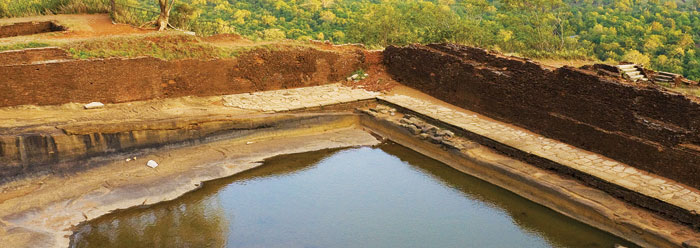
.................................................................................................................................................................
Sadanandam Anupoju
A
cistern is an element of canal fall and it is provided on the downstream
portion to dissipate the surplus energy of water leaving the crest.
The
purpose of a cistern and different types of cisterns are briefly explained in
this article.
Purpose
of Cistern
The
main purposes of a cistern are as follows :
To
protect the downstream floor from the impact created by water jet/fall.
To
dissipate the energy of the waterfall by providing a water cushion.
To
generate backflow of water by installing end-wall to ensure an impact in the
cistern.
Types
of Cisterns
Cisterns
are classified into four types based on the type of impact :
Vertical
Impact Cistern
Horizontal
Impact Cistern
Inclined
Impact Cistern
Cistern
without impact
1. Vertical
Impact Cistern
In
case of vertical impact cistern, the flow from upstream fall freely under
gravity after passing the crest and meet the cistern provided on the downstream
bed.
 |
| Vertical Impact Cistern |
To
provide cistern, some part of the downstream bed up to a certain length is
depressed into the ground and this depressed portion is filled with water to
create water cushion.
 |
| Vertical Impact on Downstream Bed |
Vertical
impact cistern is the most effective cistern among other types.
2. Horizontal
Impact Cistern
Horizontal
impact cistern contains sloping glacis of reverse curvature at its bottom.
When
the water stream is passed over the crest, it flows to the downstream through
sloping glacis provided.
When
the flow reaches the bottom of the sloping glacis, the direction of flow
changes from inclined to horizontal and flow condition remains supercritical.
 |
| Hydraulic Jump Formation at the Bottom of Sloping Glacis |
3. Inclined
Impact Cistern
In
case of inclined impact cistern, sloping glacis is provided to carry the flow
to the downstream but here reverse curvature at the bottom of glacis is
eliminated.
Hence,
the formation of hydraulic jump occurs on the glacis itself and the energy gets
dissipated.
But
it is not possible to dissipate the complete energy of water stream since the
stream has a vertical component of a supercritical jet while on glacis.
However,
provision of roughening devices such as baffle wall, deflectors, biff wall,
friction clocks etc. on the inclined impact cistern is helpful to dissipate the
excess energy.
But
to provide roughening devices, the cistern length provided should be more.
4. Cistern
without impact
 |
No Impact on Cistern due to low height canal fall
|
This
case can be seen in low height canal falls or canal falls with large submergence
where it is not possible to develop hydraulic jump.
In
such cases, roughening devices are installed on the cistern to dissipate the
energy of water flow.
Sadanandam
Anupoju is a Civil
Engineer and is an Author, Editor and Partner of The Constructor since 2016.
https://theconstructor.org/water-resources/cistern-types/30797/?utm_source=pushengage&utm_medium=pushnotification&utm_campaign=pushengage

You might also like:
https://puricarechronicles.blogspot.com/2020/02/broken-cisterns-any-cistern-we-create.html
Broken Cisterns
Any cistern we create for ourselves will be a broken cistern
https://puricarechronicles.blogspot.com/2020/02/broken-cisterns-any-cistern-we-create.html
...............................................................................................................
Women and Wells
CLICK HERE . . . to view . . .
...............................................................................................................
Satisfying Your Core
Longing
CLICK HERE . . . to view . . .





No comments:
Post a Comment